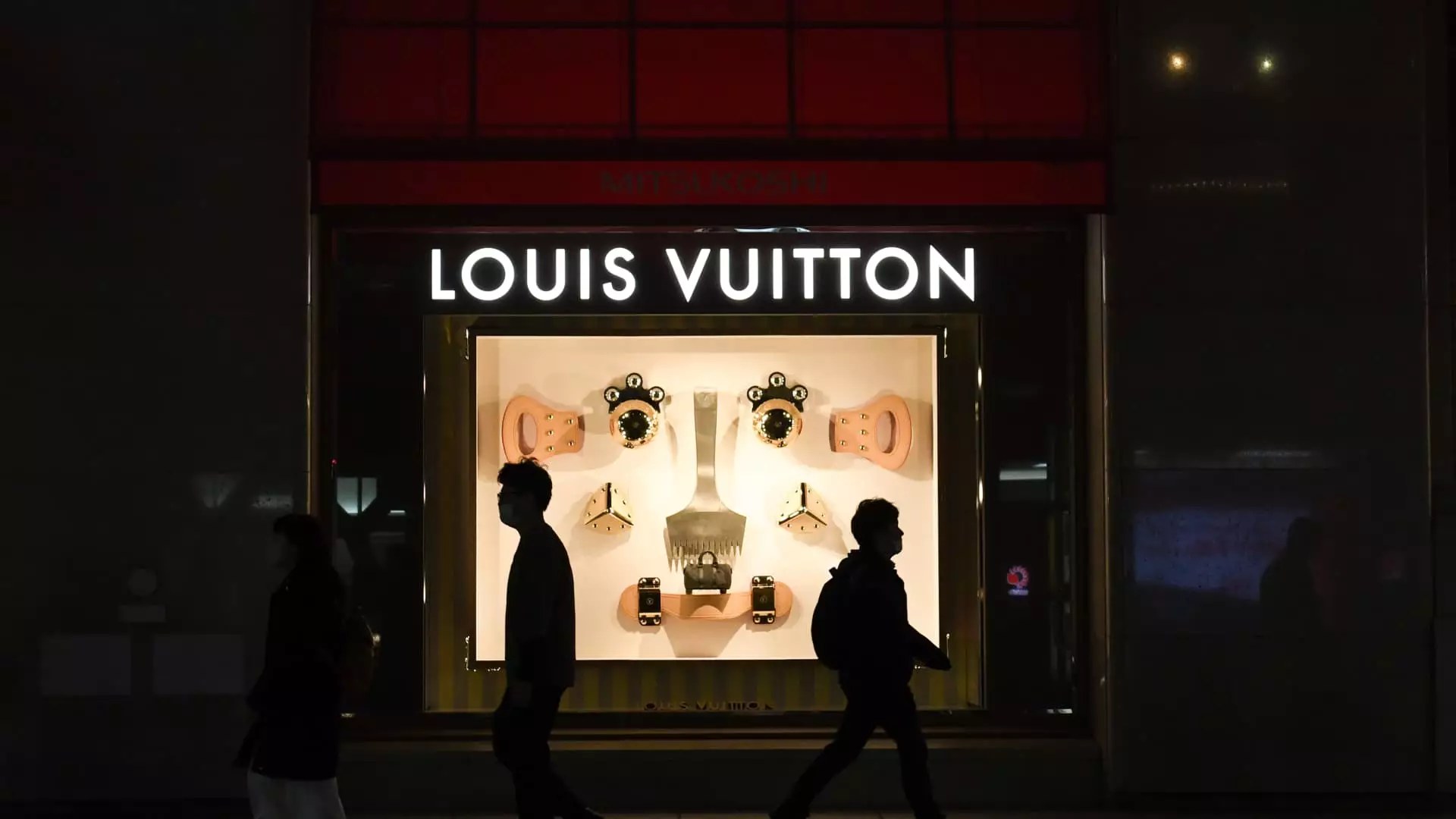For decades, LVMH has stood as a titan in the luxury goods market, often viewed as a barometer of affluent consumer behavior. However, recent revelations have shaken that perception. An alarming 3% slide in first-quarter sales has unveiled cracks in its armor, allowing its rival, Hermès, to momentarily eclipse its market value. Such a fall not only uproots the hierarchy in the luxury sector but also raises essential questions about the sustainability of excessive consumerism and the long-term viability of luxury brands amid turbulent economic climates.
The much-publicized image of luxury brands thriving irrespective of economic downturns appears to be faltering. A decrease in sales of products typically considered recession-proof—like cognac and high-end handbags—suggests that even wealthy consumers are feeling the pinch. The decline in LVMH’s wine and spirits segment, particularly, reveals the vulnerability of the industry’s so-called aspirational clients who might be re-evaluating their spending habits. This seismic shift could indicate a troubling trend; the luxury market may not be as insulated from economic uncertainties as previously believed.
Geopolitical Tensions: The Unseen Saboteurs
The luxury sector has often basked in its own glow, seemingly immune to the chaos that plagues other industries. However, the impact of geopolitical tensions cannot be ignored. LVMH’s difficulties can be partially attributed to the uncertain economic landscape shaped by ill-conceived tariffs and trade wars. The company’s CFO, Cecile Cabanis, alluded to the direct relationship between global economic volatility and the purchasing decisions of the affluent clientele. As these geopolitical uncertainties loom larger, they turn the once-consistent cash flow of luxury brands into a fragile trickle.
Moreover, the notion that high-end consumers can effortlessly absorb price hikes due to tariffs is increasingly questionable. This misguided belief disregards the psychological aspects of luxury shopping; consumers, regardless of their wealth, may not be willing to pay inflated prices for items amidst economic instability. The potential ripple effects from U.S. trade policy are profound and far-reaching, and LVMH finding itself on the defensive could signify a broader crisis for luxury brands globally.
Market Reactions: The Blindness to Broader Impacts
One cannot ignore the broader implications of LVMH’s stumbling sales on the luxury sector as a whole. The cascading effects have sent Kering, Burberry, and Richemont shares on a downward spiral, suggesting that investors are suddenly wary, reflecting a disturbing trend that transcends individual brands. The broader market may be re-evaluating the resilience of luxury goods against economic headwinds, raising pressing questions about how long this pseudo-sustained growth could last.
As analysts like Citi’s Thomas Chauvet and Mahesh Mohankumar point out, the outlook appears dim, with expectations for turnaround being significantly lowered. This pessimistic read, combined with downward adjustments in stock targets—like Jefferies’ drastic cut from 670 euros to 510 euros—signals a worrying future for LVMH, as uncertainty breeds hesitance among investors.
Luxury’s Existence in Hard Times: A Double-Edged Sword
There remains a paradox within the luxury industry: its foundation rests on conspicuous consumption yet relies heavily on socio-economic stability. As affluent buyers find themselves navigating a challenging landscape—not just of tariffs but of changing consumer sentiment—the luxury sector’s fallibility becomes painfully apparent. The delicate balance of maintaining exclusivity while adapting to a world in flux is becoming increasingly complicated.
Cabanis’s admission about the need to potentially recalibrate pricing to offset inflation indicates a recognition of this harsh reality; no luxury brand is immune to financial pressures. The idea of repricing, once deemed unthinkable, is now on the table.
This duality of aspiration and vulnerability challenges the long-standing notion that luxury companies can merely ride the waves of wealth, regardless of timeframes or external conditions. If high-end labels begin to lower their prices or offer more discounts to woo hesitant customers, it could undermine the luxury image they have cultivated.
As the luxury industry grapples with these revelations, the narrative is shifting. A 3% sales drop might seem insignificant compared to more severe economic downturns, but combined with geopolitical instability and changing consumer behaviors, this trend demands a reevaluation of what luxury means in a world that no longer tolerates excess as a norm. The question remains: as aspirations shift, can LVMH and its ilk adapt without losing their identity?

